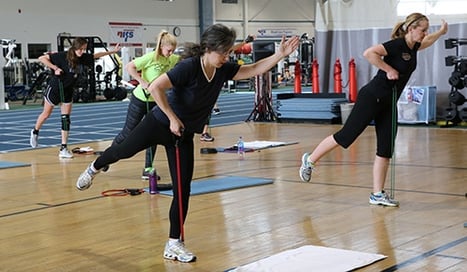 If you take a few minutes to google the various types of fitness training out there, you will come up with a list of about 10 different ones, and then 10 more different variations of each of those. And each year more and more “fitness trends” come out, making it quite confusing for the consumer as to what to choose and where to start. It can be confusing and even frustrating choosing what is right for you and your body.
If you take a few minutes to google the various types of fitness training out there, you will come up with a list of about 10 different ones, and then 10 more different variations of each of those. And each year more and more “fitness trends” come out, making it quite confusing for the consumer as to what to choose and where to start. It can be confusing and even frustrating choosing what is right for you and your body.
And to take it a step further, maybe the results you want that you aren’t getting are because you need to try something different. Maybe that different thing does not have to be some crazy, drastic change in gyms, your diet, or everything in your life. In fact, maybe it’s just a workout style that suits you better. Each product you see today—like CrossFit, Orangetheory, and Dailey Method to name a few—all follow a specific training method. And what works for one person doesn’t always work for the next.
I have narrowed it down to five categories of training methods, so let’s take a look at what each one is, and I’ll help you narrow down your focus.
Circuit Training
High intensity–style workouts that incorporate both aerobic exercise and strength training. These circuit workouts can be done with or without equipment.
- Target: Building strength and muscular endurance. These workouts tend to keep you on the higher end of your heart rate zones and are usually designed in stations for time, with little to no rest in-between.
- Goals: The circuit training method of exercise is good for those people who are looking for weight loss, are in a time crunch, or are looking for overall general fitness, a total-body workout, and toning. Many say this is where you get the most bang for your buck because you can get the results you are looking for in less time.
Aerobic Training
This type of training is generally summarized as meaning “with oxygen” or cardio training.
- Target: These workouts tend to target the cardiovascular system, mainly the heart and lungs. In most cases it’s associated with running, biking, swimming, jumprope, step class, and other cardio-based exercises. This style of training helps to increase your cardiovascular endurance and open the gap in your heart rate zones.
- Goals: The aerobic training style is good for those looking to lose weight, for specific training programs like marathons, for athletes looking to increase performance and endurance as well as recover appropriately, and for those trying to reduce the risk of chronic illness like obesity, heart disease, and diabetes.
Heart Rate Training
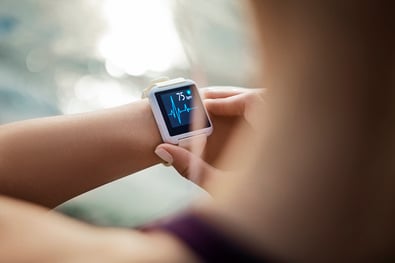 This type of training is specific to each individual and their personal zones. You can read more here about HR training, but this training method is focused in on zones like fat burn, cardiovascular endurance, peak performance, and recovery. In many cases, HR training is viewed as the all-around best training method there is.
This type of training is specific to each individual and their personal zones. You can read more here about HR training, but this training method is focused in on zones like fat burn, cardiovascular endurance, peak performance, and recovery. In many cases, HR training is viewed as the all-around best training method there is.
- Target: Heart rate training helps to increase endurance and sustainability in workouts by allowing you to peak and recover in a way that is specific to your body. Training zones are identified by doing a VO2 test.
- Goals: For anyone and everyone! Typically people training for endurance races like Spartans or marathons, or athletes honing in on max results and recovery, for the person who is totally burnt out after each workout, and all the way to people who are on medications that affect their heart rate.
Flexibility Training
Contrary to what I know everyone is thinking, it’s not just yoga! Forget the general stereotype of moms walking into the gym with lattes, flip-flops, and their yoga mat; this training style is probably the most important, yet the most neglected. It incorporates corrective exercises, stretching (both static and dynamic), and movements from head to toe.
- Target: To improve flexibility, mobility, range of motion, balance, and better posture.
- Goals: Another method of training that is for everyone! If you are not a yoga person, it’s time to start! Yoga folks, dancers, runners, meatheads: this is for you, too! Flexibility training is for every single person who wants to enhance their training in any way.
Strength Training
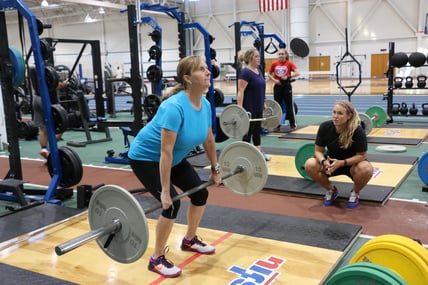 Strength training typically is done with heavy weight but can be done with lighter ones as well. This style of training is directly associated with Newton’s law: mass x acceleration = force.
Strength training typically is done with heavy weight but can be done with lighter ones as well. This style of training is directly associated with Newton’s law: mass x acceleration = force.
- Target: To increase muscle strength.
- Goals: Perfect for those looking to put on mass; can be good for those who don’t have a bunch of time to train; also good if you desire to move heavy things.
What should you do from here? If you are stuck in a rut or want to find the method that is going to be most effective for you, take some time to define your goals, figure out what is realistic for you, and take into consideration your past exercise experience. All these things play into what will work as well as what you like to do while in the gym.
This blog was written by Amanda Bireline, BS, CPT. To find out more about the NIFS bloggers, click here.


 Continuing with the Group Fitness Class of the Month series, December is upon us and we are highlighting a new class. Hopefully you had the opportunity in November to do a
Continuing with the Group Fitness Class of the Month series, December is upon us and we are highlighting a new class. Hopefully you had the opportunity in November to do a  PiYo at NIFS
PiYo at NIFS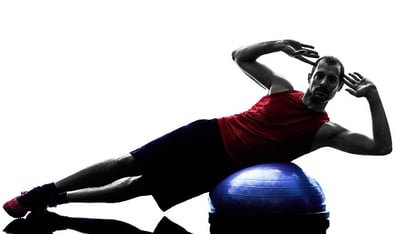 Greetings, NIFS friends. We have passed the midway point in the calendar year 2016, and I hope that you have been successful in meeting some of your yearly goals as well as making new ones. During this time of year, we find outdoor and recreational exercise more readily available and appealing, understandably, and because of this, there is time for the occasional spare moment for yours truly to ponder (by ponder, I mean BLOG!).
Greetings, NIFS friends. We have passed the midway point in the calendar year 2016, and I hope that you have been successful in meeting some of your yearly goals as well as making new ones. During this time of year, we find outdoor and recreational exercise more readily available and appealing, understandably, and because of this, there is time for the occasional spare moment for yours truly to ponder (by ponder, I mean BLOG!). 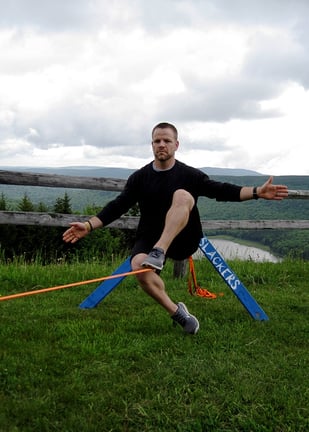 I recently attended an event that was pretty far outside my usual activity base. I consider myself a lifetime mover and a lifetime learner, but I have to admit this event had me a bit concerned about my success rate, comfort level, and quite honestly my enjoyment. After all, I was supposed to be on vacation. The event I am referring to is a rather large one called
I recently attended an event that was pretty far outside my usual activity base. I consider myself a lifetime mover and a lifetime learner, but I have to admit this event had me a bit concerned about my success rate, comfort level, and quite honestly my enjoyment. After all, I was supposed to be on vacation. The event I am referring to is a rather large one called 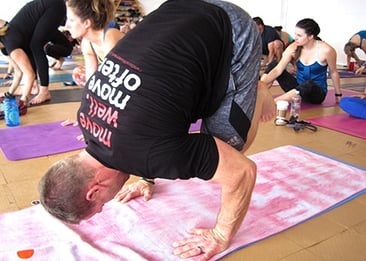 Prior to this trip to
Prior to this trip to  I am a huge believer that if there is a will, there is a way, and to always find ways to get things done. Just like the tree in the picture growing on top of a rock, it found a way to get tall and strong even though it is out of its usual environment of growing from the ground. IT FOUND A WAY. You can always find a way to eat right, exercise, get enough sleep, decrease stress; you just have to reach and work for it. There is a way; find it. This tree did, and so can you.
I am a huge believer that if there is a will, there is a way, and to always find ways to get things done. Just like the tree in the picture growing on top of a rock, it found a way to get tall and strong even though it is out of its usual environment of growing from the ground. IT FOUND A WAY. You can always find a way to eat right, exercise, get enough sleep, decrease stress; you just have to reach and work for it. There is a way; find it. This tree did, and so can you.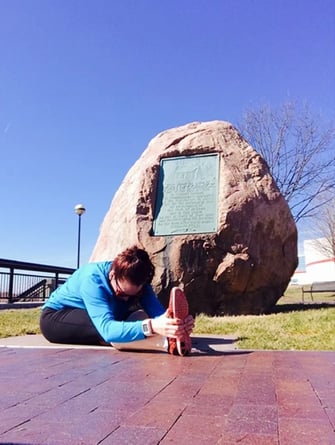 We know it is encouraged by fitness professionals, and included at the end of group exercise classes, but I want to ask you, personally: how many times after a workout do you actually take the time to cool down?
We know it is encouraged by fitness professionals, and included at the end of group exercise classes, but I want to ask you, personally: how many times after a workout do you actually take the time to cool down?  There are so many things in life that can affect different aspects of the human body, and stress is one of the biggest! During a stressful time in life, the body can undergo several physiological changes that can be detrimental to your overall health. Though sometimes we cannot avoid certain stressors that fall into our path of life, there are some things that can be done to help you cope during those times.
There are so many things in life that can affect different aspects of the human body, and stress is one of the biggest! During a stressful time in life, the body can undergo several physiological changes that can be detrimental to your overall health. Though sometimes we cannot avoid certain stressors that fall into our path of life, there are some things that can be done to help you cope during those times.  Okay, so you may have been hearing the word “PiYo®” circulating these last few months within the world of group fitness. For those of you who feel like you do not completely know what it means or what the class entails, fear not. I guarantee you are not the only one with questions, and as a certified PiYo instructor, I would love to share a few reasons why I teach it, and the benefits that can come from practicing it.
Okay, so you may have been hearing the word “PiYo®” circulating these last few months within the world of group fitness. For those of you who feel like you do not completely know what it means or what the class entails, fear not. I guarantee you are not the only one with questions, and as a certified PiYo instructor, I would love to share a few reasons why I teach it, and the benefits that can come from practicing it. Surprisingly, for many of us (myself included), just using our own bodyweight for certain exercises can be challenging enough. From moves like triceps pushups, to lunges, to side planks, 140+ pounds begins to feel really heavy really quick! PiYo® takes many of these simple-to-learn yet challenging moves and combines them with aspects such as “time under tension” and dynamic pulses to keep the body moving the whole time.
Surprisingly, for many of us (myself included), just using our own bodyweight for certain exercises can be challenging enough. From moves like triceps pushups, to lunges, to side planks, 140+ pounds begins to feel really heavy really quick! PiYo® takes many of these simple-to-learn yet challenging moves and combines them with aspects such as “time under tension” and dynamic pulses to keep the body moving the whole time. 
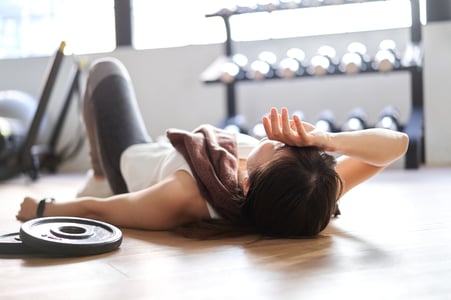 I think most of us can agree that a little muscle soreness after a fantastic workout is a fun way to remember that things are changing and that we are getting stronger. I think we can also agree (and most have experienced it) that there is a certain degree of soreness that kind of feels like “everything hurts so badly you can’t stand up or lift your arms,” which isn’t quite as motivating. Along with this you may feel irritable, fatigued, and really hungry. Sounds fun, right?
I think most of us can agree that a little muscle soreness after a fantastic workout is a fun way to remember that things are changing and that we are getting stronger. I think we can also agree (and most have experienced it) that there is a certain degree of soreness that kind of feels like “everything hurts so badly you can’t stand up or lift your arms,” which isn’t quite as motivating. Along with this you may feel irritable, fatigued, and really hungry. Sounds fun, right?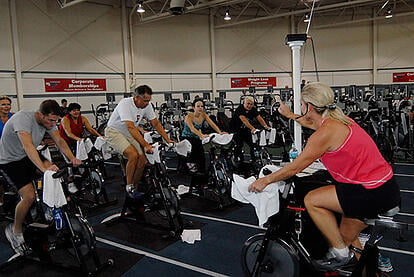
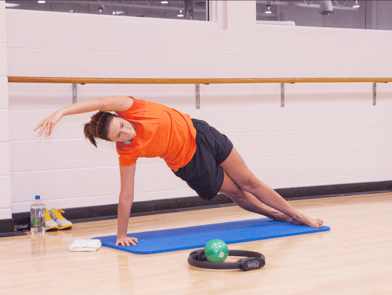 pressure
pressure